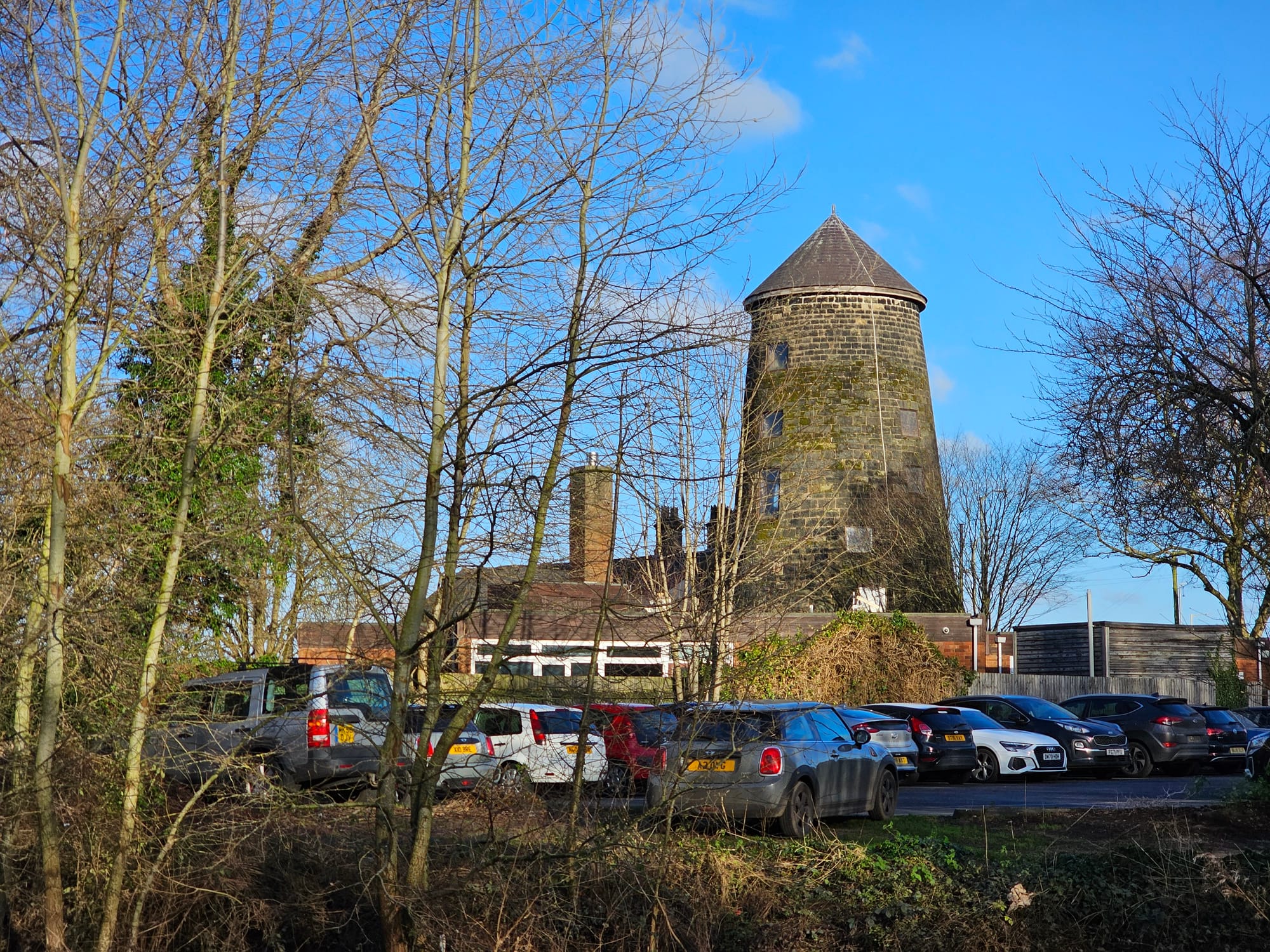Broad Eye Windmill, a historic landmark in Stafford, has stood tall and witnessed numerous changes over the centuries. Delve into the rich history of the tallest windmill in the Midlands, from its construction in the late 18th century to its transformation into a valuable heritage resource in the present day.
Watch my video on the windmill on YouTube
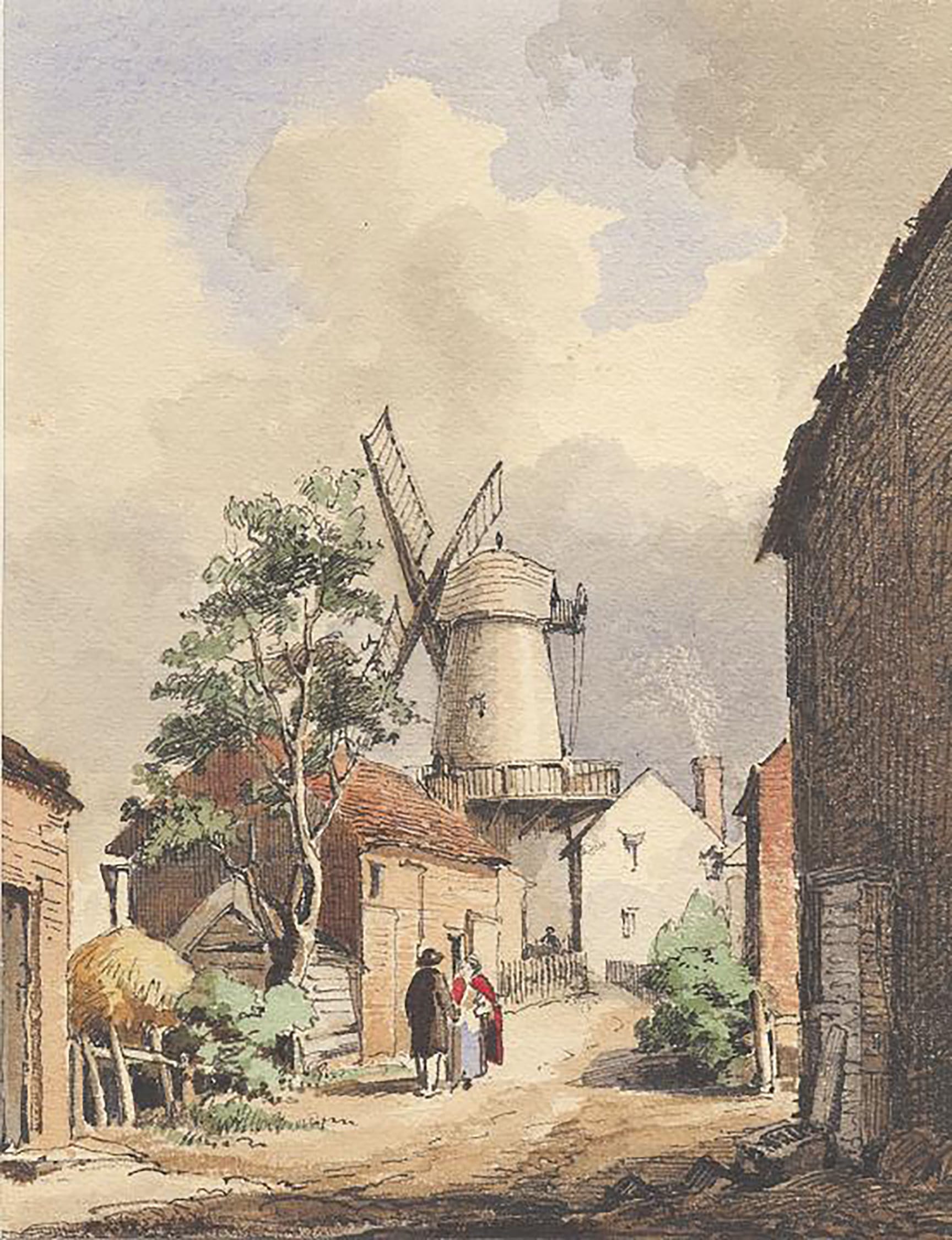
Early Construction and Purpose
In 1796 the location for the construction of the Broad Eye Windmill was driven by two main objectives: addressing flooding issues and catering to the increasing demand for flour in the town of Stafford. Stafford had a history of periodic flooding, which posed significant problems for the residents and businesses. One of the key reasons for selecting the Broad Eye area for the windmill's construction was its strategic position near the River Sow. The Broad Eye area was also the home of the county prison, also known as the Bride Well and a castle. This prison was demolished in 1700.
This location allowed the windmill to play a vital role in mitigating the flooding problem. By diverting resources towards the windmill project, it was believed that the local watermills, which had been drawing water from the River Sow, could be replaced or supplemented by the windmill's operations. Reducing reliance on watermills was expected to help manage the flooding issue more effectively.
As Stafford's population grew, so did the demand for flour, a staple ingredient for baking and sustenance. The existing watermills in the town were known for charging high prices for grain and flour, causing financial strain for the residents. To alleviate this issue and ensure a consistent supply of flour, the decision to construct the Broad Eye Windmill was made.
Broad Eye Windmill was constructed using stones salvaged from the Elizabethan Shire Hall, which had been demolished just a year earlier in 1795. Economically, using stones from the Shire Hall made sense, as it would have been a cost-effective option. The demolition of the Shire Hall left surplus building materials, readily available for other construction projects like the windmill. The beams inside the windmill have also been identified as the sixteenth century, so it is safe to assume that they also would have come from the Shire Hall. The joists and beams have ovolo mouldings, which are similar to those in the Ancient High House.
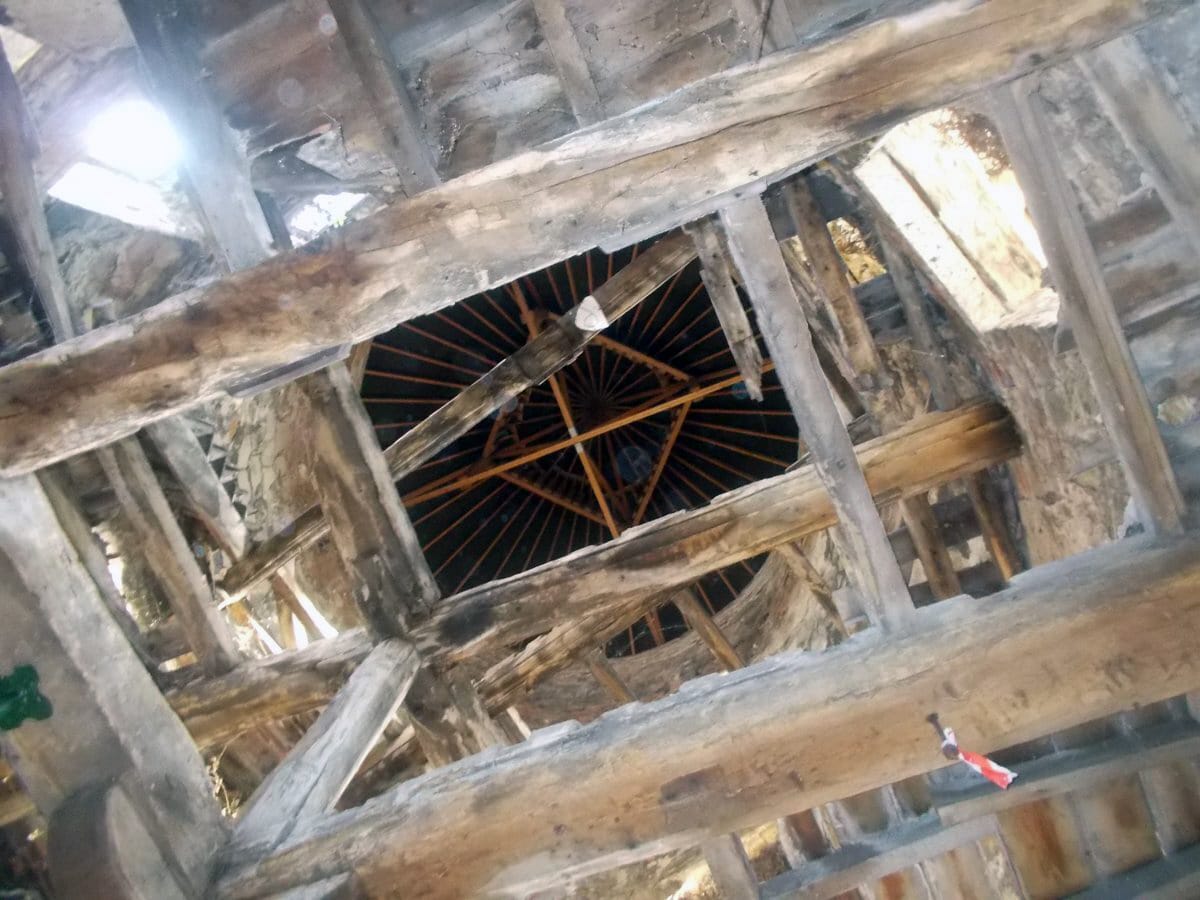
It is also recorded in the listing at Historic England, that there was a stone above the door with the Royal Arms, which also came from the Shire Hall. I found a hint that says it was given to the Wragg Museum, which is now Staffordshire Archives. However, they are currently closed, so I couldn't find out if they have it. I'll come back to this in the Autumn of 2024 when they re-open.
The windmill stands on a site with deep historical roots, believed to have been that of a castle built by Edward the Elder. This earlier structure, predating the windmill by several centuries, would have been part of the defensive and administrative framework of the area during the Anglo-Saxon period. Edward the Elder, son of Alfred the Great, played a significant role in the establishment of fortified towns (burhs) across England, aiming to consolidate and defend Anglo-Saxon territory against Viking incursions.
The decision to build the windmill in this location reflects a common medieval and post-medieval practice of reusing strategic sites that had historical or defensive significance. Such sites were often chosen for their elevated positions or their symbolic importance within the local landscape. In the case of the Broad Eye Windmill, the foundation stones of the earlier castle were repurposed, and they are noted to be larger and older than the higher courses of stone.
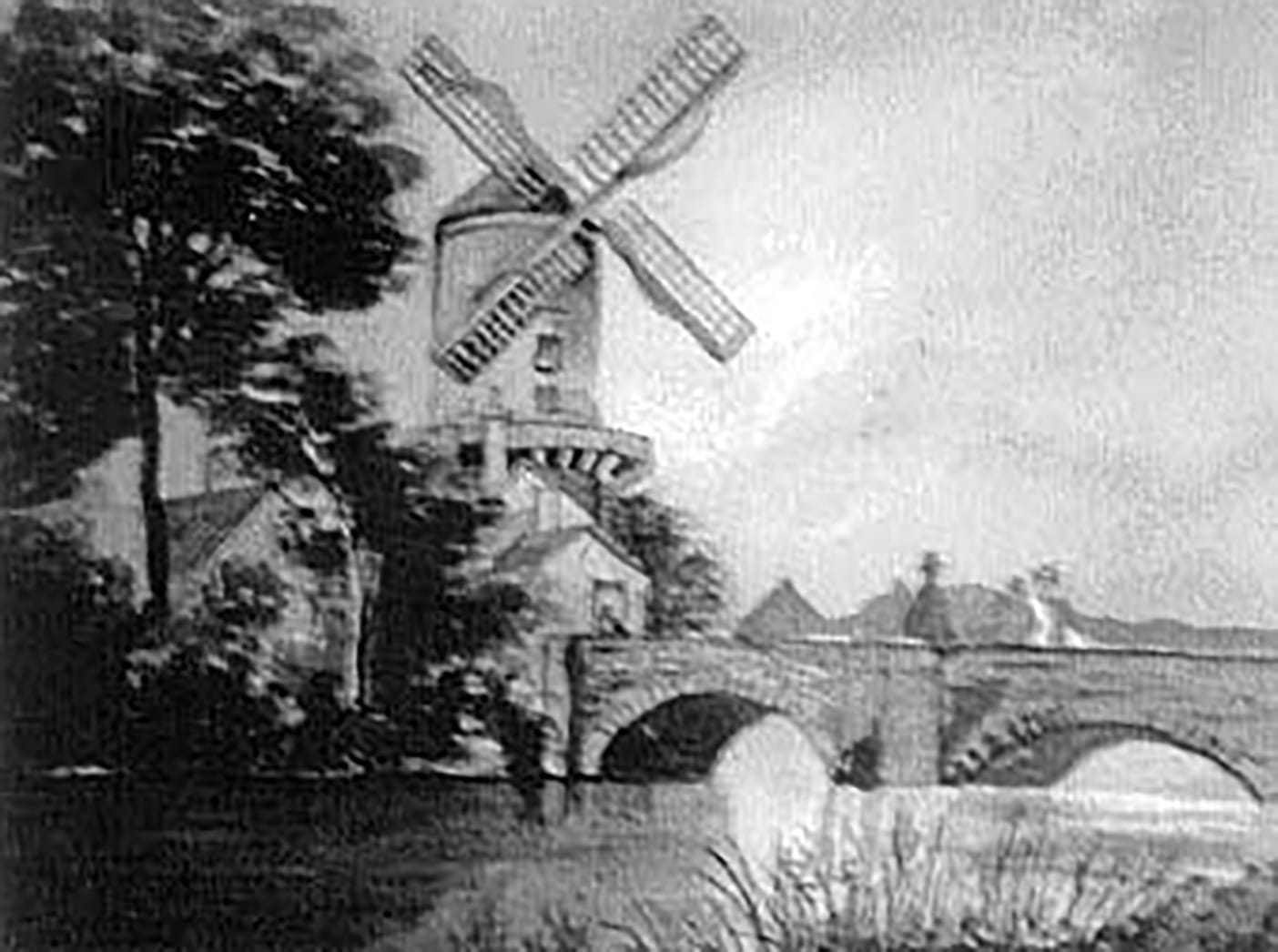
Unique Design and Conical Tower
The windmill featured a unique and distinctive conical tower as part of its design. This tower was a notable architectural feature that set it apart from other windmills of its time. Standing as one of the tallest windmills in the Midlands at 70 feet and seven stories, the tower was an ambitious construction, showcasing the craftsmanship and innovation of its builders.
This design contributed to the windmill's efficiency in harnessing wind power in low-lying land. It allowed for the placement of the windmill's sails at an optimal height to catch the prevailing winds effectively and they were attached to a revolving cap, which had to be elevated to avoid the buildings around it. This design choice reflected the careful planning and engineering that went into creating the windmill, ensuring that it would make the most of the wind that came up the river.
The tower of the Broad Eye Windmill was a multi-story structure, comprising a total of seven floors. Initially, when the windmill was constructed, only the upper four floors of the tower were utilized for flour production. These upper floors housed the milling machinery, including the grinding stones and equipment necessary for processing grain into flour. The decision to use the upper floors for this purpose was likely based on factors such as wind exposure, accessibility, and operational efficiency. Halfway up the building was a reefing stage which is a wooden gallery where the miller would stretch the canvas over the sails.
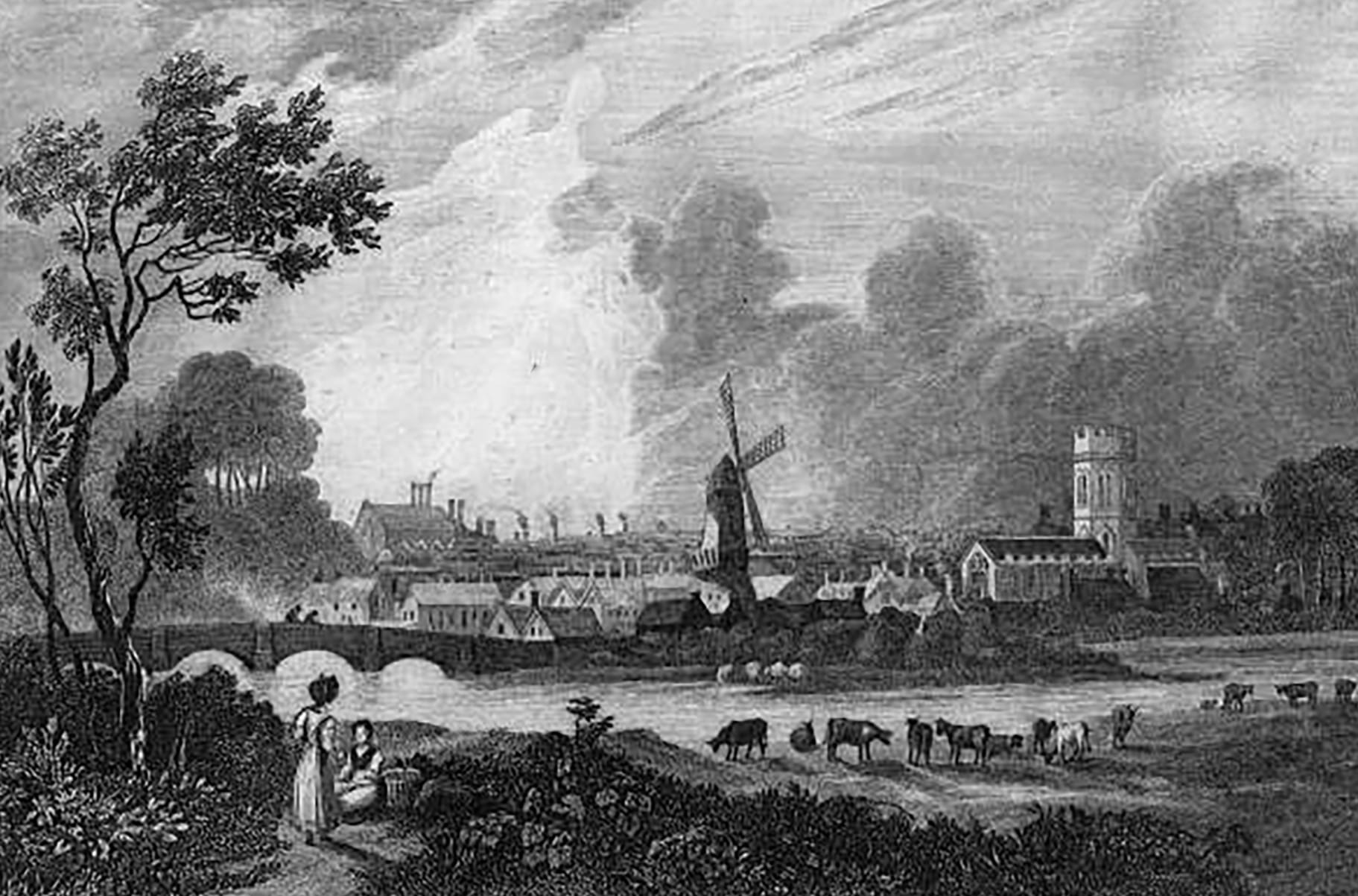
Steam Power
During the 19th century, the demand for flour in Stafford continued to grow steadily. To ensure that the Broad Eye Windmill could keep up with this increasing demand, a significant addition was made to its machinery – a 16-horsepower Nodding Donkey steam engine. This addition marked a crucial development in the mill's operation and took place between 1835 and 1847.
The steam engine was a significant innovation, and it was located in a dedicated engine house on the riverside, the chimney of which was 60 feet tall and almost reached the top of the windmill. Its primary purpose was to provide essential support to the mill's production process. The steam engine played a crucial role in ensuring that the mill could continue grinding grain even when there was insufficient wind to turn the sails. This innovative addition greatly improved the mill's efficiency and output.
There were seven pairs of millstones, driven by steam and some still by sail, making the windmill a hybrid of power sources.
With the installation of the steam engine, the Broad Eye Windmill became a more reliable source of flour production, capable of working in various weather conditions, including periods of calm winds.
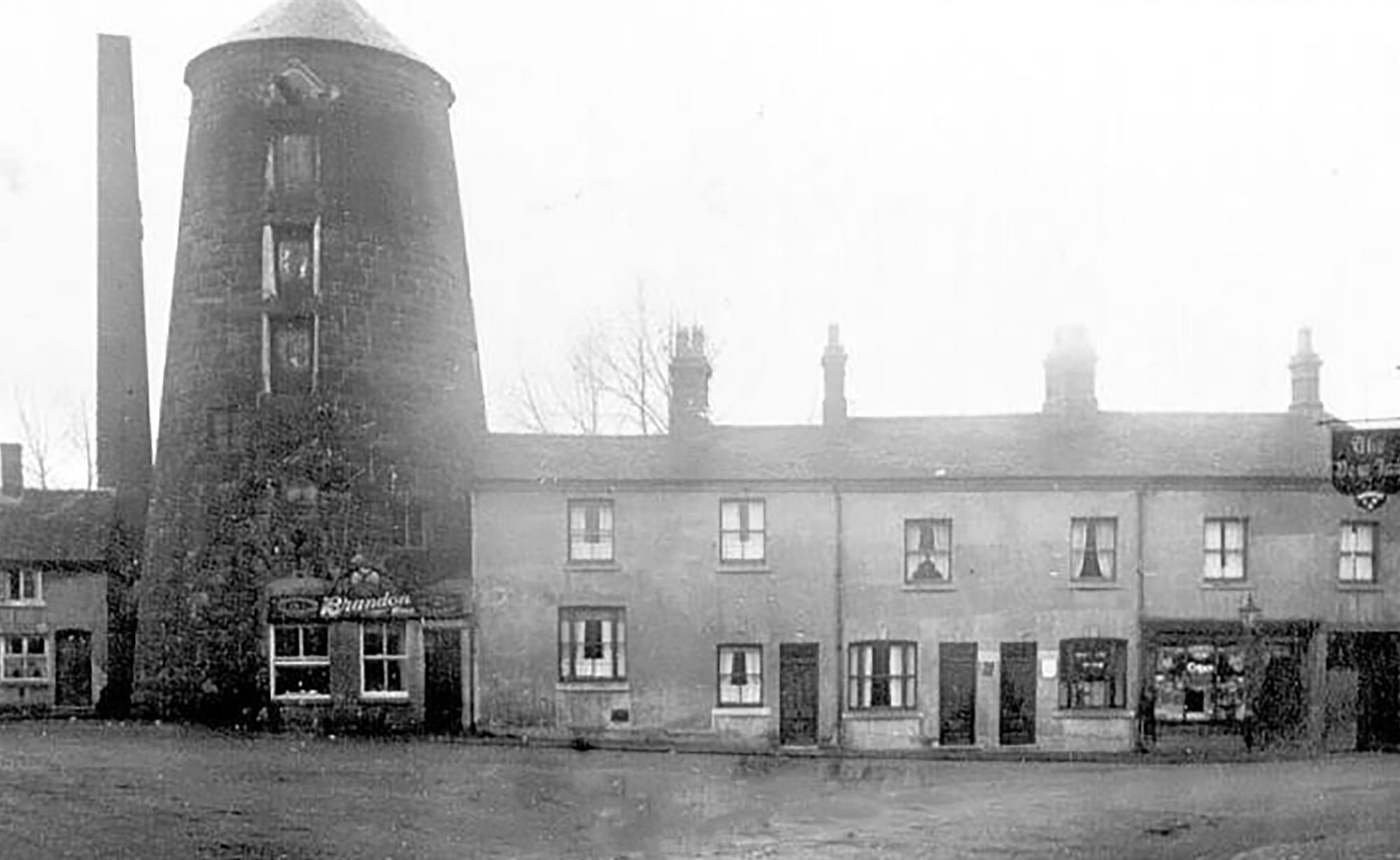
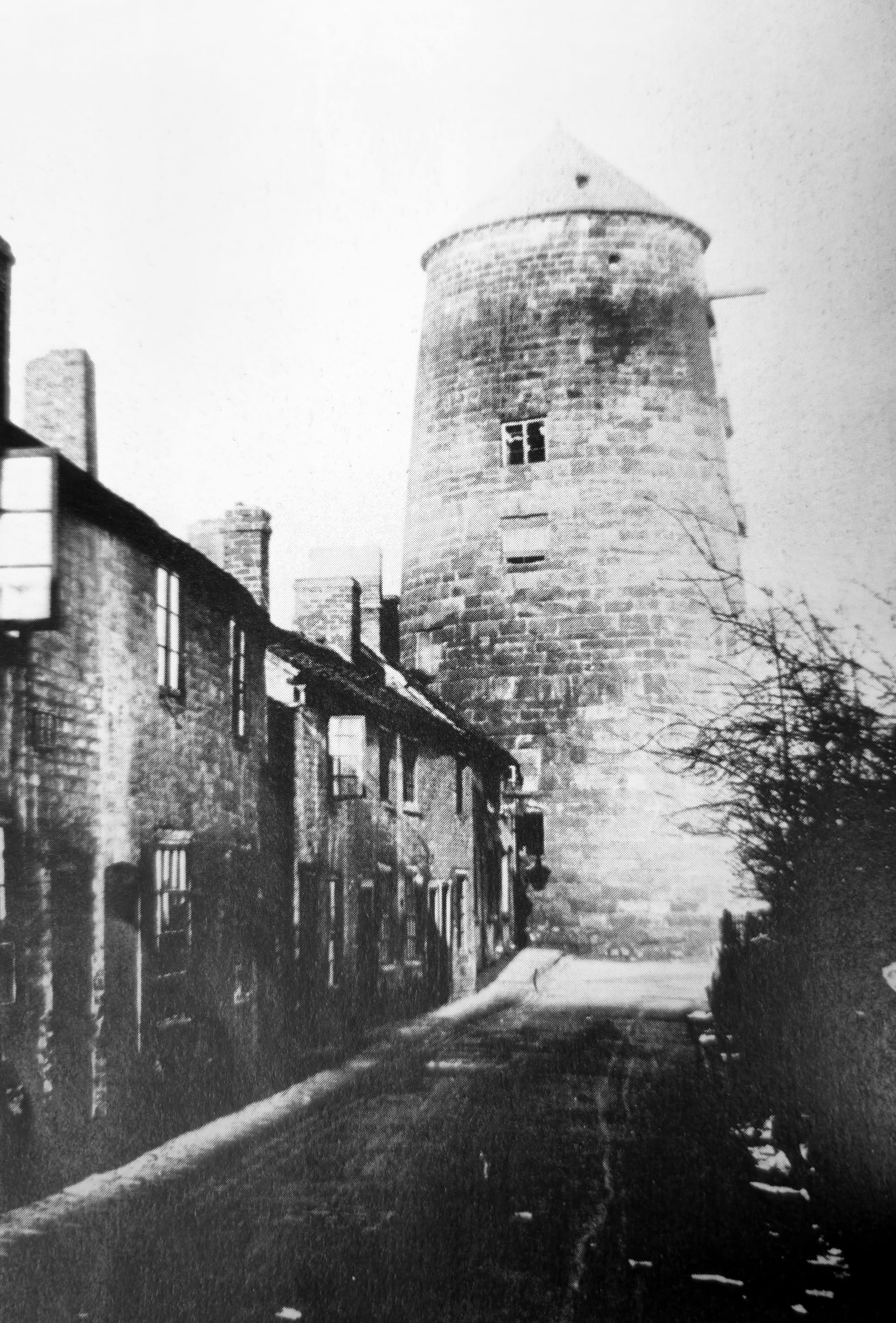
Decline and Conversion
As the 19th century progressed, the Broad Eye Windmill encountered significant challenges that impacted its profitability and long-term viability. George Brookfield took over the mill in 1870 and was a producer of animal feed, which helped the agricultural industry locally and helped the mill to stay profitable.
The lease for the mill came up for sale in 1882 when it was described as having been 'recently refit,' the work having been carried out by W.G. Bagnall. However, the emergence of roller mills and a growing demand for finer, white flour began to erode the windmill's dominance in the milling industry.
Roller mills represented a technological advancement in flour milling. They were capable of producing finer and whiter flour, which appealed to consumers who sought a higher-quality product. The traditional stone grinding process used by windmills, while effective, couldn't match the consistency and efficiency of roller milling. This shift in consumer preference created a competitive disadvantage for windmills like the Broad Eye Windmill.
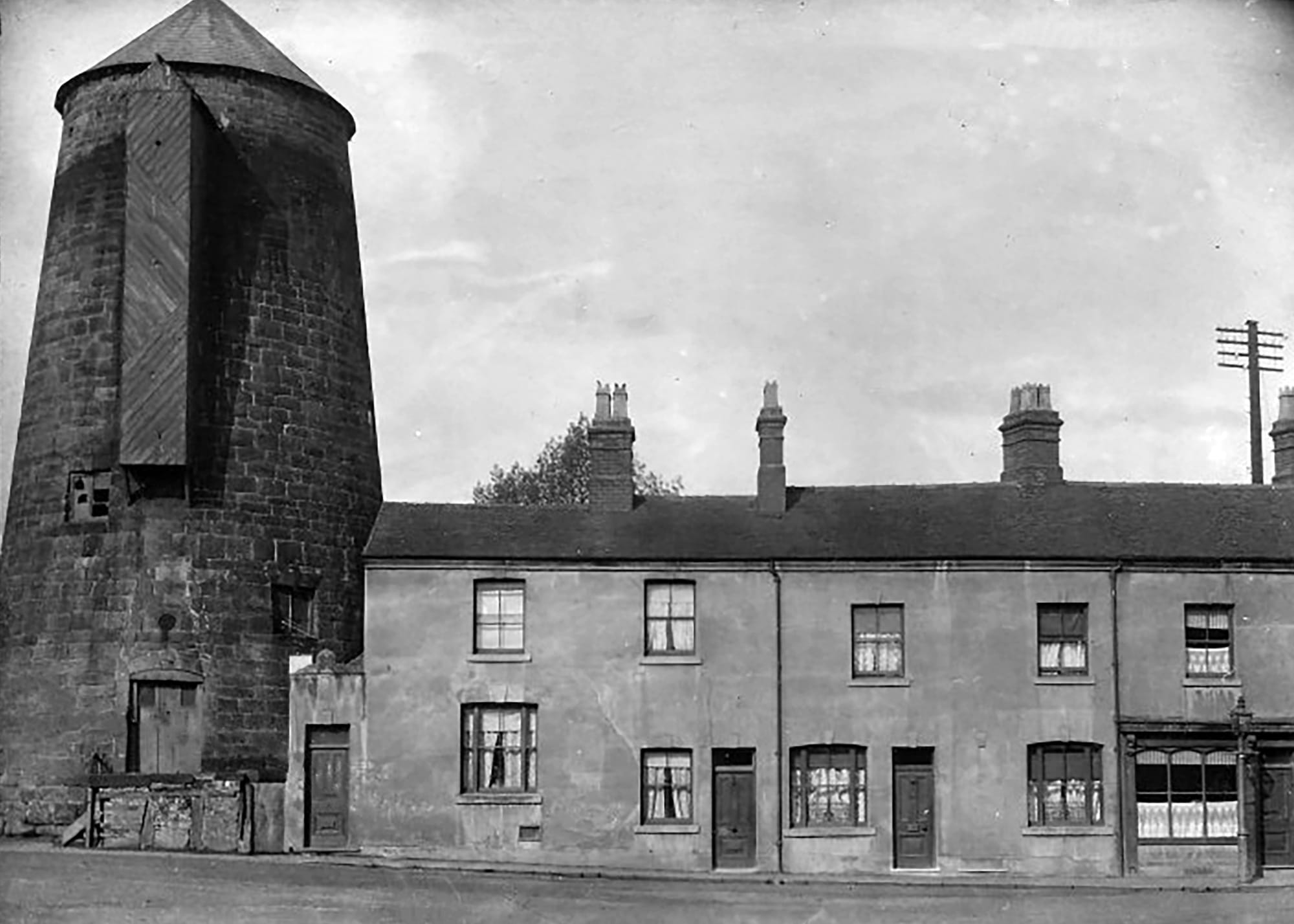
Additionally, roller mills were often more cost-effective to operate and maintain compared to windmills. They could produce flour in larger quantities and with fewer manual labour requirements. This efficiency allowed roller mills to offer their products at more competitive prices, further challenging the profitability of wind-driven mills.
As a result of these factors, the Broad Eye Windmill began to face declining profits and a dwindling customer base. The demand for coarser, wholemeal flour that the windmill specialized in decreased, while roller mills dominated the market for finer, white flour. This shift ultimately led to the windmill's decision to cease flour production in 1886. The last recorded miller was Ralph Bullock Wright who then emigrated to New York.
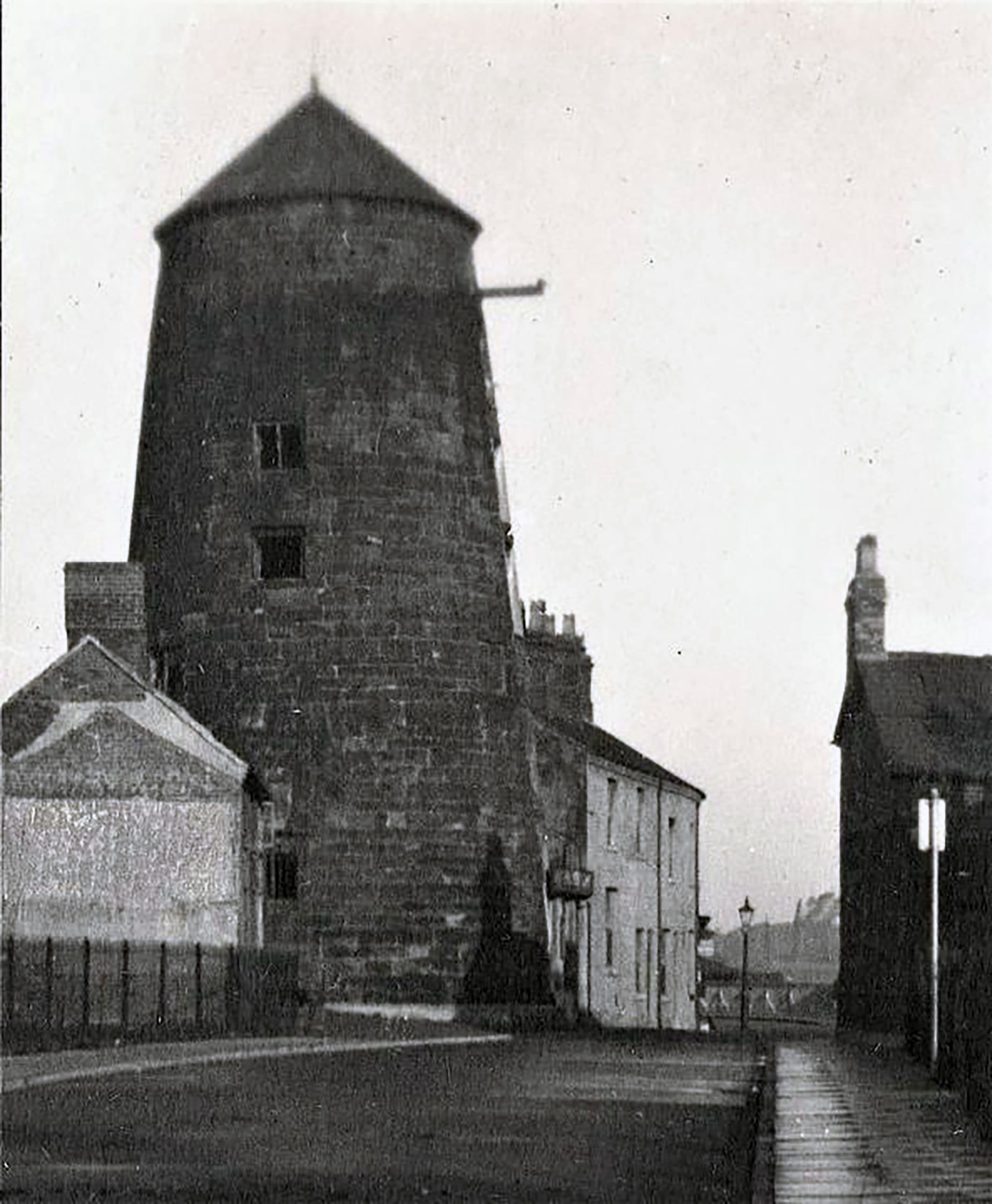
Removal of the sails
To reflect its new role and purpose, the machinery and sails that had once ground grain and powered the mill were removed in 1896. This transformation signalled a shift from being a working flour mill to becoming a different kind of facility, with the upper levels being used for storage. As the 19th century progressed, the Broad Eye Windmill adapted to changing demands and diversified its operations beyond just flour production.
The building was then used as a warehouse for grain and, later, by James Marsh of Espley House, Newport Road, a mineral water manufacturer. The production of mineral water was another unique aspect of the windmill's operations. This likely involved bottling and distributing mineral water sourced from local springs or wells. Mineral water was a popular beverage in the 19th century, and having a local source for its production added to the windmill's significance as a hub of economic activity.
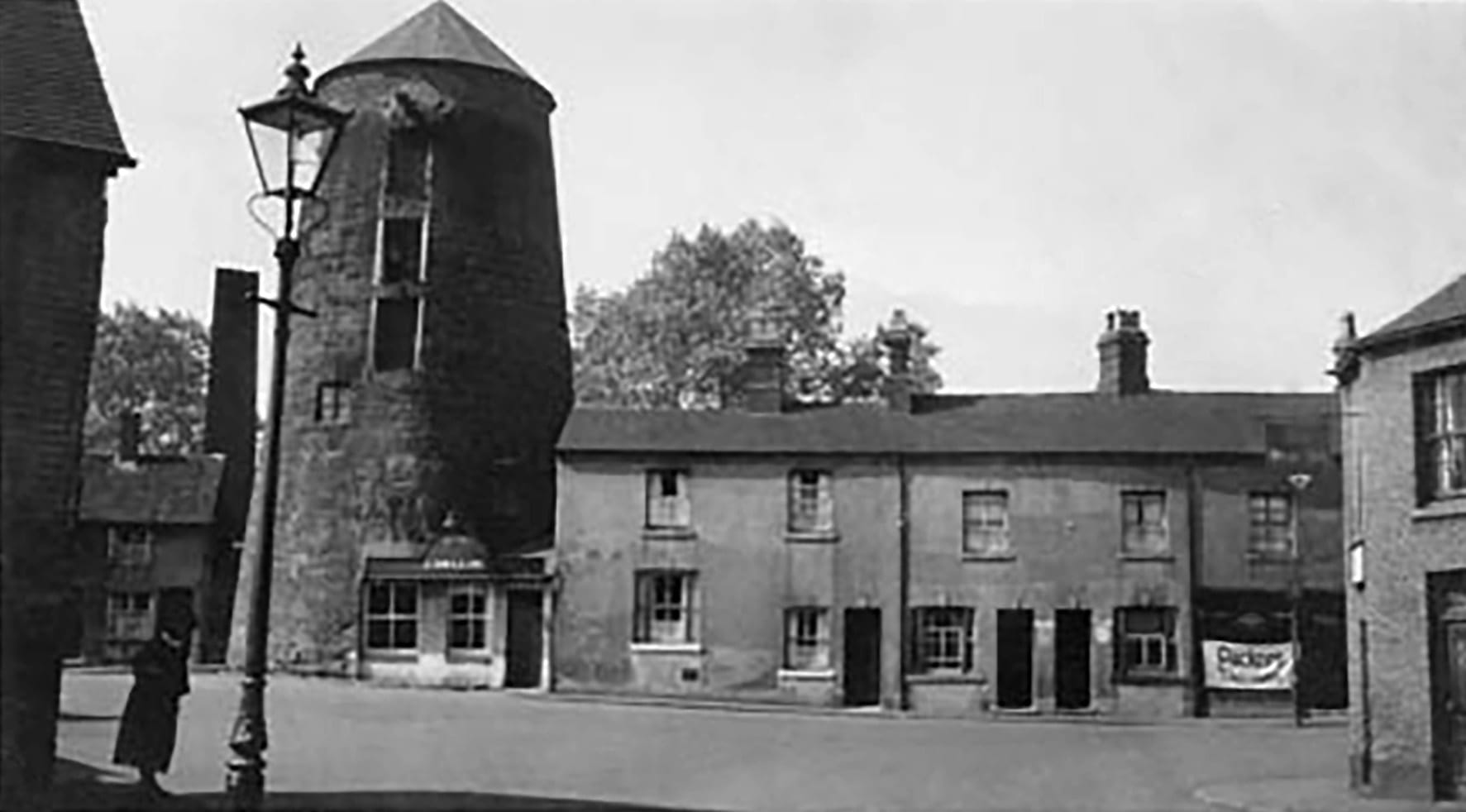
During the early 20th century, the ground and lower floors of the Broad Eye Windmill were repurposed by James Marsh from Espley House on Newport Road for the production of carbonated mineral water. By 1901, the operation was acquired by Henry Musgrove, who initially maintained the James Marsh & Co brand until 1903, after which it was rebranded as Marsh & Co. However, the business faced financial difficulties, leading to Musgrove's bankruptcy in 1905, subsequently, the firm was taken over by a company named H.H.B. Kent, which ceased operations in 1906.
Subsequently, the premises were leased to Joseph Chaplain and Son by James Wright, utilizing the space for a bakery, stable, and wagon shed between 1902 and 1919. In 1905, Joseph Chaplain took over the mill's ownership by settling the mortgage and officially acquired the property in 1907.
The windmill saw a new phase in 1919 when local farmer Charles Brassington Cantrill purchased the lease. Cantrill transformed the lower part of the tower into a storefront, creating access at street level, and sealing off the upper parts of the structure, which likely saw minimal maintenance thereafter.
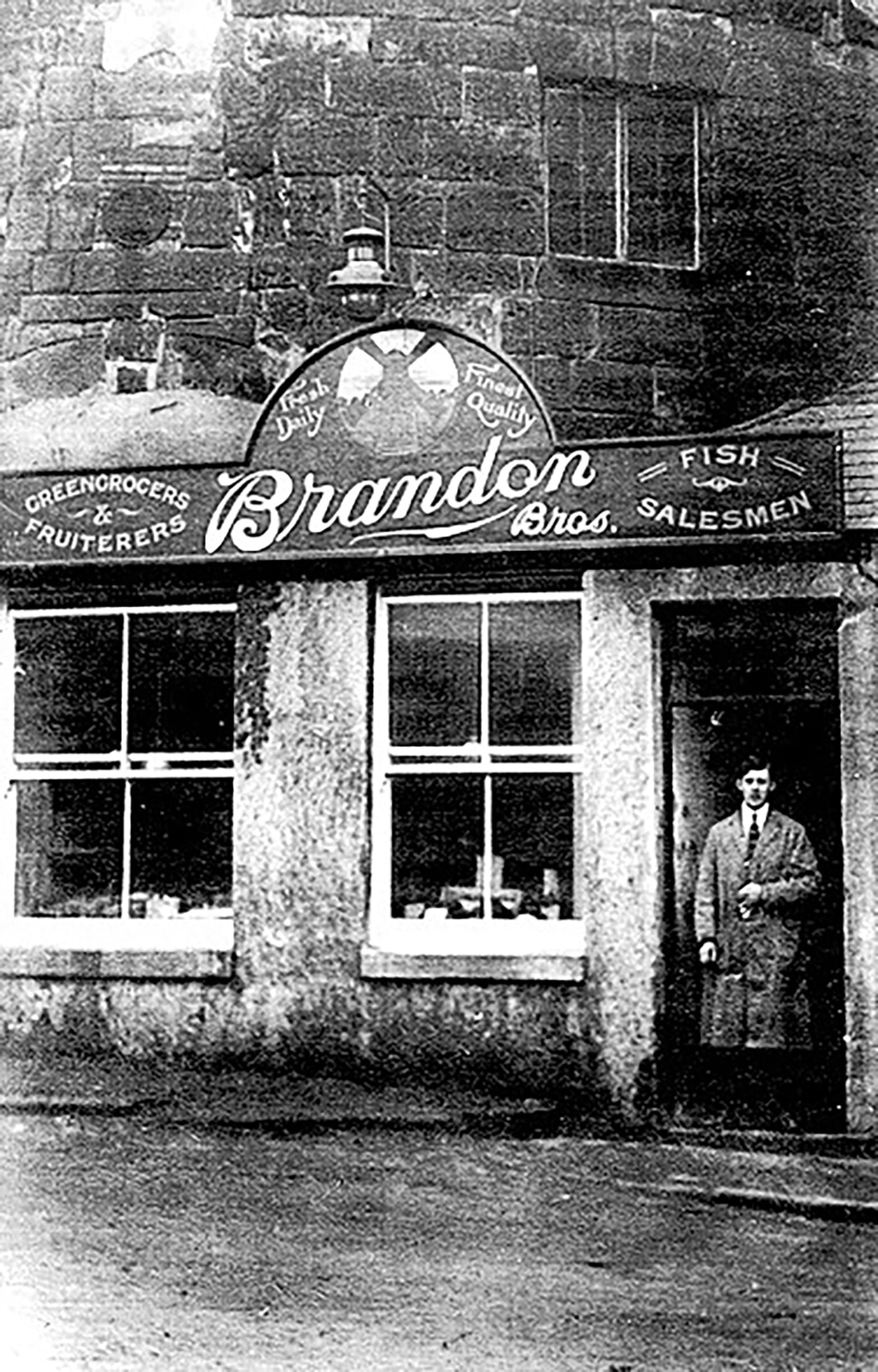
The initial tenants, Brandon Bros, operated as a fruiterer and greengrocer. Little is documented about their tenure, including their commercial performance or the details of their lease, leading to the assumption that their business was short-lived. They were succeeded by an individual named J.J. Mellor, though the nature of Mellor's business and tenure remains unclear.
In the early 1920s, the space transitioned into a butcher's shop under George Foster, continuing until 1931. Following this period, Percy Palmer acquired the business, turning it into a general store that saw considerable success, prompting him to relocate to a larger space at 9 Castle Hill in 1932. The mill's shop space was then taken over by John Burrows, a cobbler, who remained until World War Two commenced.
As a warehouse, the windmill became a versatile and adaptable structure. Its spacious interior and multi-floor layout made it suitable for storing a wide range of goods and materials. The windmill's location near the River Sow and its historical significance made it an attractive option for businesses looking for storage space.
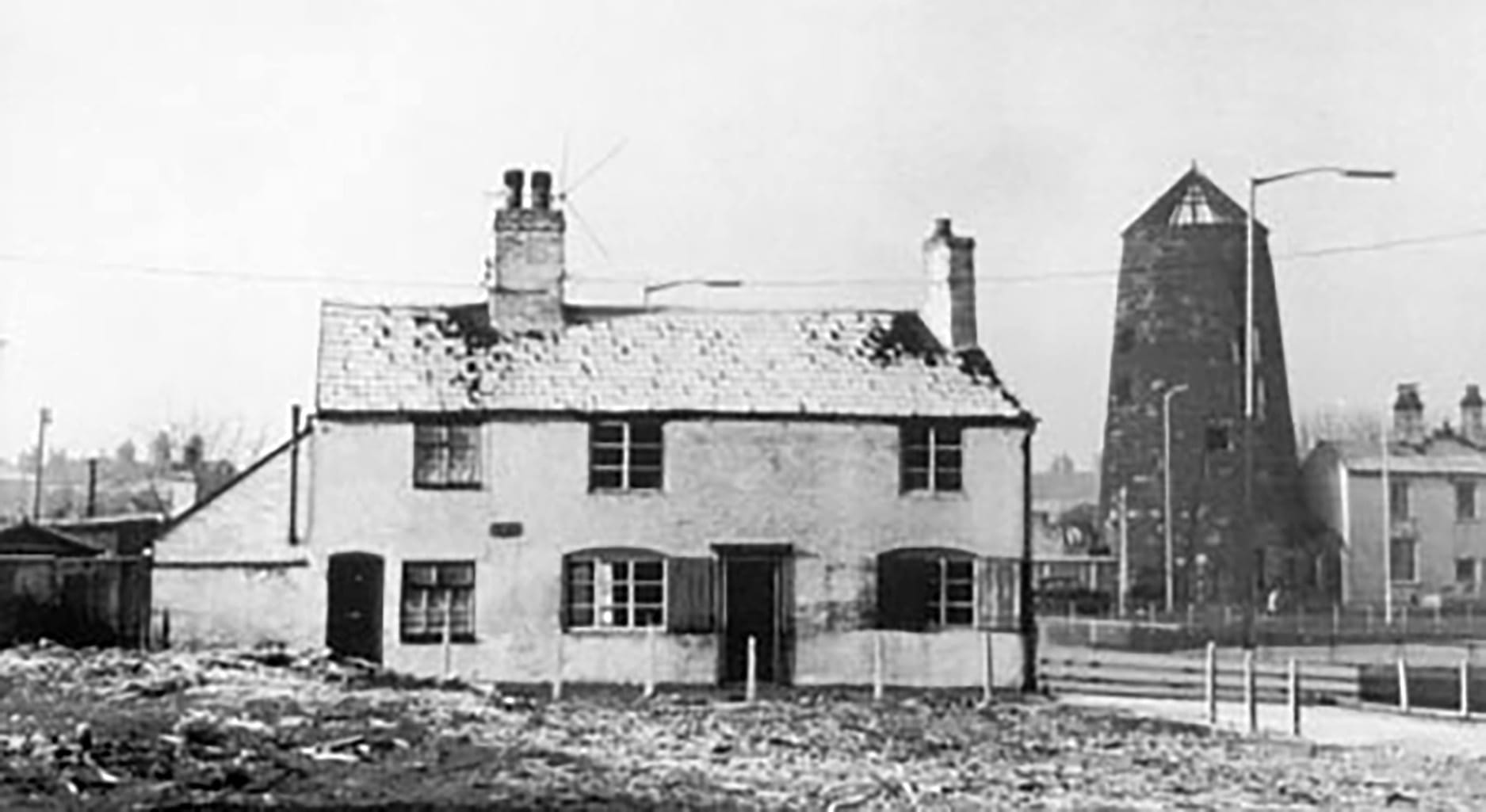
World War II
During World War II, the Broad Eye Windmill played an unexpected role in history. As the war raged on, American troops stationed in Stafford found a valuable use for the windmill – they converted it into a storehouse to meet their logistical needs.
The windmill's sturdy structure and ample interior space made it an ideal storage facility. American military personnel utilized the windmill to store supplies, equipment, and various goods necessary for the war effort. Its strategic location near the River Sow likely contributed to its selection as a storehouse, as it provided easy access to transport materials via the waterway.
However, while the windmill found renewed purpose during the war, its post-war fate took a different turn. After World War II came to an end, the windmill began to experience a decline. Several factors contributed to its gradual deterioration.
The aftermath of the war saw a shortage of labour and resources for maintenance and repairs. The economic challenges that followed also made it difficult to allocate resources to historical preservation. Consequently, the windmill began to fall into disrepair and neglect in the post-war years.
After World War II, the windmill premises were utilized by John Burrows for his cobbling business, alongside a watch repair service operated by Mr Sambrooke, also known as Mr Sam Brooke. Both of their activities were confirmed through findings during an archaeological survey conducted between 1996 and 1998, which uncovered remnants of their businesses within the tower's base.
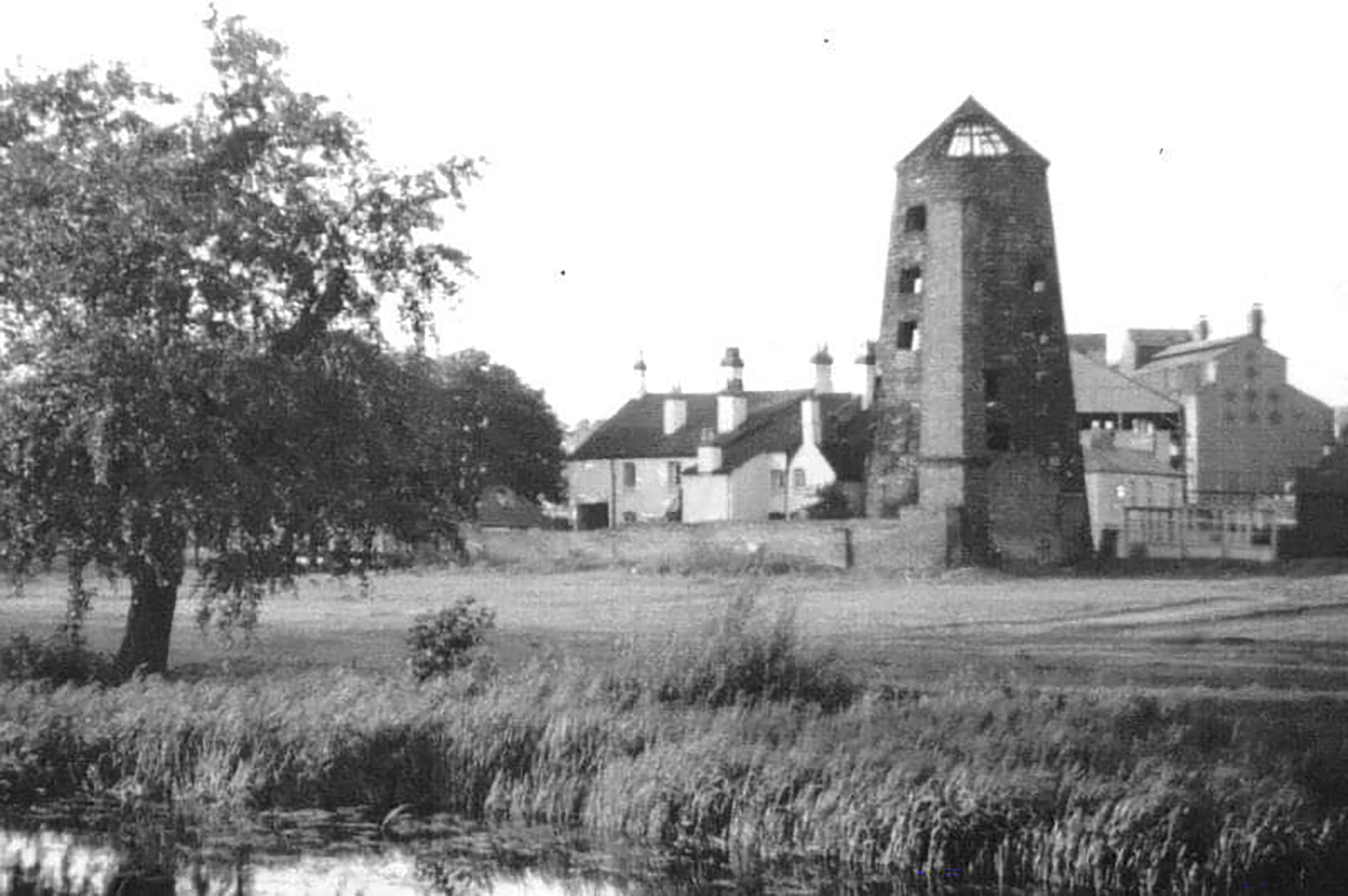
Heritage Status and Preservation
In 1951, the Broad Eye Windmill achieved a significant milestone in its history when it was granted Grade II listed building status. This prestigious designation recognized the windmill's exceptional historical significance and architectural value. At this point, the lease for the windmill was with the Cantrill family of Coppenhall.
The Grade II listing placed the windmill under legal protection, ensuring its preservation for future generations. This status signified that the windmill was considered a building of national importance and historical interest, deserving special care and conservation efforts.
In the late 20th century, Stafford Borough Council took proactive measures to ensure the preservation and restoration of the Broad Eye Windmill. They replaced the windows and had a new roof installed.
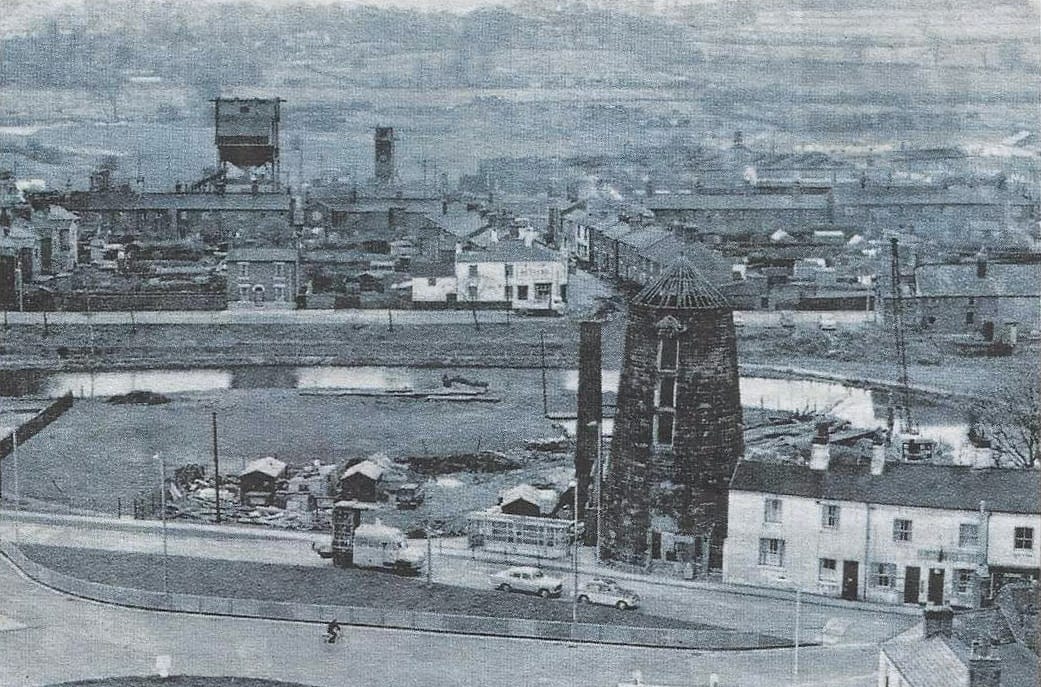
Friends of Broad Eye Windmill
In 1996, a significant turning point in the history of the Broad Eye Windmill occurred with the establishment of the "Friends of Broad Eye Windmill" group. This momentous initiative was driven by individuals who possessed a deep commitment to preserving the historical significance of the windmill and ensuring its continued relevance in the community.
One of the central goals of this group was the meticulous restoration of the windmill's external appearance, aimed at faithfully recreating the 1920s-era aesthetics. This endeavour was motivated by a desire to capture the essence of the past and allow the windmill to stand as an authentic representation of Stafford's rich heritage.
Beyond the physical restoration, the "Friends of Broad Eye Windmill" had a broader vision for the windmill. They aspired to transform it into a dynamic educational resource centre and museum. Through this initiative, visitors could engage with the town's history, explore the windmill's integral role within the community, and gain insights into its significant contribution to Stafford's industrial heritage.
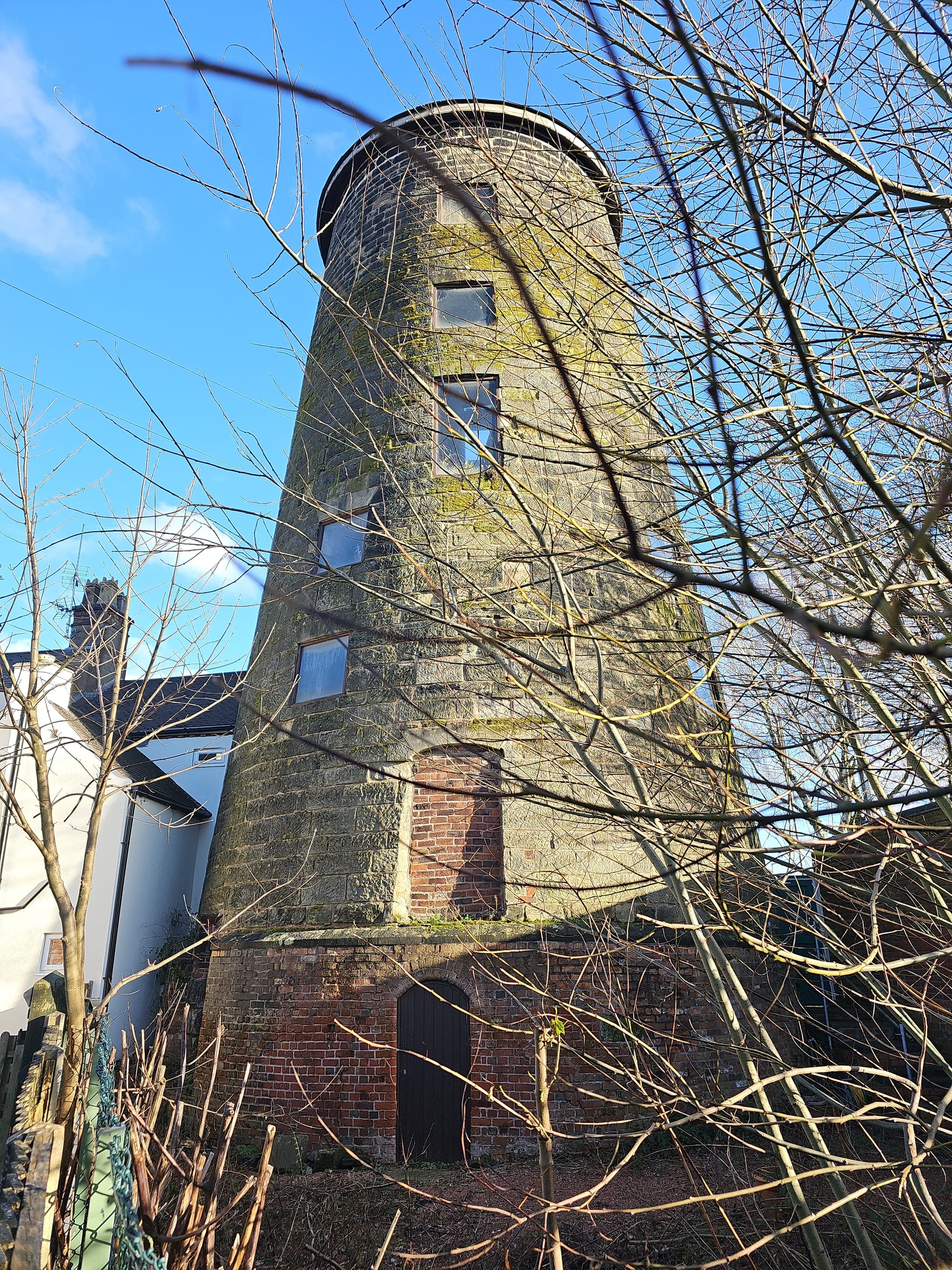
Present Day
In the present day, the Broad Eye Windmill stands as a cherished symbol of Stafford's rich history and cultural heritage. Ongoing efforts are dedicated to its preservation and maintenance to ensure that it continues to survive.
The restoration work carried out by the "Friends of Broad Eye Windmill" has not only rejuvenated its external appearance but has also revived its historical significance. Visitors from near and far can now experience the windmill's authentic charm and explore its role in shaping Stafford's past.
As a Grade II listed building since 1951, the windmill is recognized for its historical significance, and it holds a special place in the hearts of both locals and tourists alike. It serves as a reminder of Stafford's industrial heritage and its ability to adapt and endure over the centuries.
Today, the windmill occasionally hosts educational events and exhibitions, further fulfilling the vision of the "Friends of Broad Eye Windmill" to create an engaging educational resource centre and museum. These activities provide opportunities for the community to connect with its history and appreciate the value of preserving such cultural landmarks. It has also been the home to a radio station, Windmill Broadcasting.
Overall, the Broad Eye Windmill remains a vibrant part of Stafford's cultural landscape, a testament to the dedication of those who have worked tirelessly to ensure its survival and a source of inspiration for generations to come.
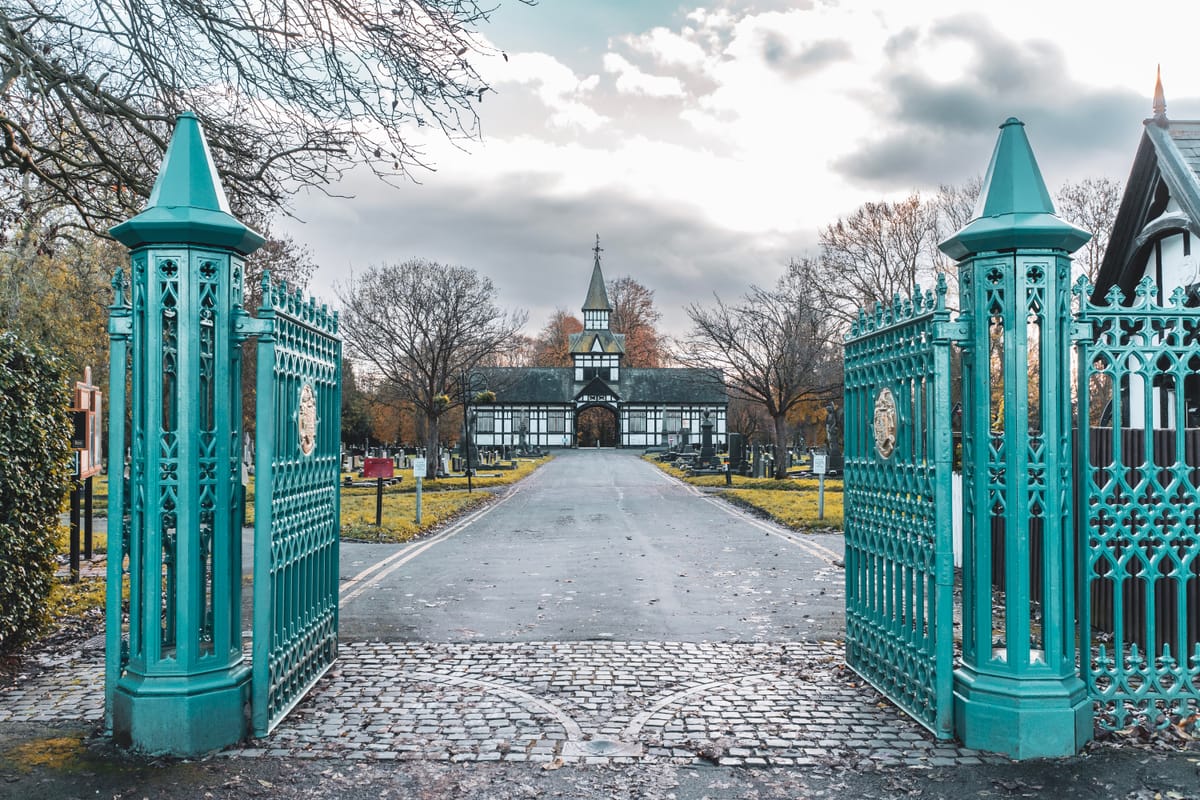
Thank you for reading!
If you like what you have read, please feel free to support me by following and signing up for my newsletter and/or buying me a coffee!

If you love our local history, don't forget to follow me, check out more of my videos and my website http://www.theredhairedstokie.co.uk
You can now also join my Patreon - www.patreon.com/TheRedHairedStokie
Check out my recommended reading list
